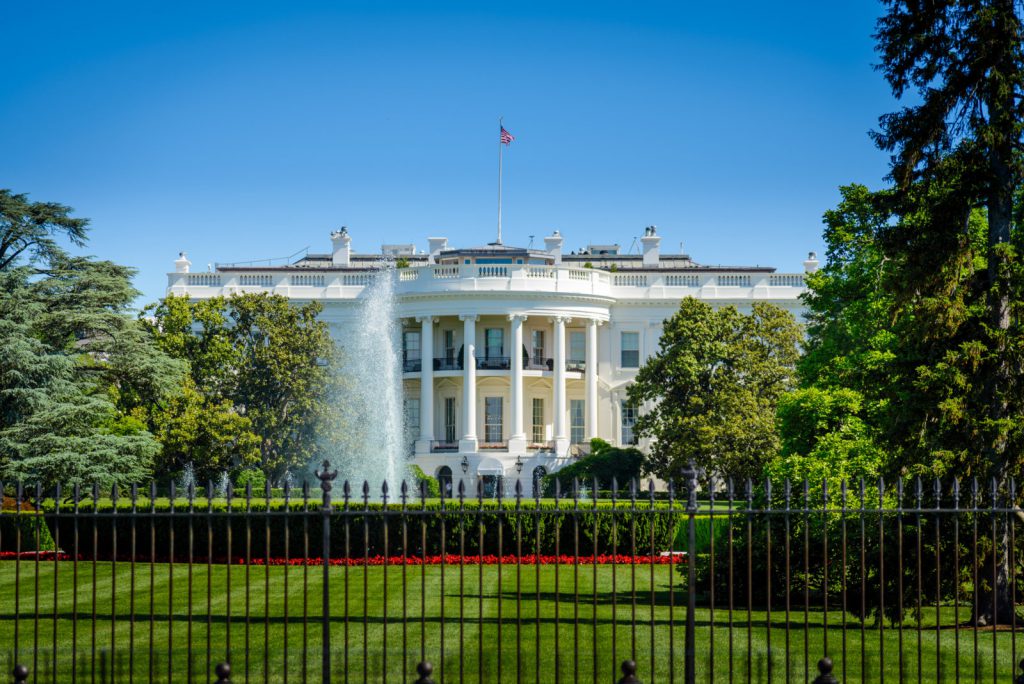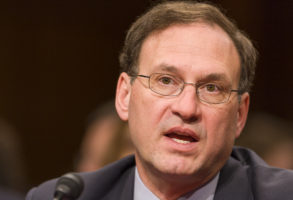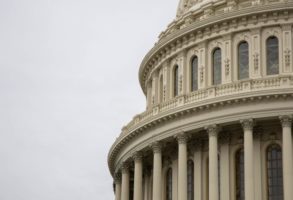
Published December 13, 2016
The Weekly Standard - December 12, 2016 issue
On the night in November 2010 that a wave of protest enabled Republicans to capture an additional 63 seats in the House of Representatives and decisively retake the majority, incoming House speaker John Boehner warned Barack Obama that the public had sent a message to “change course.” Boehner declared that it was up to Obama to act on that message, because “it’s the president who sets the agenda for our government.” That formulation frustrated conservatives, who wanted the GOP House majority to shape and command the policy agenda.
Six years later, many conservatives again hope that an incoming Congress will set the agenda, but this time with an important twist. In 2010, conservatives wanted a Republican House to undo some of the worst policies pushed by a committed and ambitious progressive president. Now, conservatives are thinking not of defense but offense. They see a peculiar opportunity created by an incoming president who appears unusually uninterested in policy details and is notorious for a short attention span.
Indeed, for many on the right, Donald Trump’s inattentiveness presents not just a possible silver lining to his tenure but a best-case scenario. An unengaged president who is vaguely amenable to conservatism on the policy front could make it possible for congressional leaders, working with administration appointees and mobilized activist groups, to achieve many of the goals conservatives have been pursuing for years (far longer than Trump has been a Republican).
Judges offer the most commonly cited example. Trump might not care deeply about core legal issues or even about appointments below the iconic Supreme Court. But if congressional leaders, key Justice Department appointees, and legal activists can compile lists of nominees that Trump is willing to sign off on (and the Senate is willing to support), conservatives can reshape the judicial branch. The same logic can now be heard regarding policy issues ranging from corporate-tax reform and Dodd-Frank to higher education, environmental regulation, health care, entitlement reform, and a great deal in between. In each case, members of Congress, policy experts, and others could work together to land bills on Trump’s desk and, with his signature, enact one desired change after another. The conservatives banking on this opportunity are thinking they might achieve a great deal of what is on their wish-lists not despite Trump’s disengagement but because of it.
But Boehner’s 2010 formulation, for all the weakness it conveyed and the alarms it rightly raised, should also generate some doubts about today’s conservative expectations. For one thing, even if it failed as a statement of congressional aspiration and constitutional ambition, Boehner’s remark certainly reflected recent history on the subject. At least since the Second World War, the president has been the most important driver of policy change in national politics. This is especially evident in cases of major reforms of the kind conservatives now have in mind regarding spending, taxes, the regulatory state, and other issues. The last three-quarters of a century offer us almost no model—the 1996 welfare reform may be the one near-exception—of Congress proving capable of setting the policy pace in a sustained way. Like it or not, the president’s central role in policy reform has been a predictable fact of American political life, for two main reasons.
First, the president has a unique ability to set priorities. Conservatives who imagine passing stacks of legislation while Trump’s attention is elsewhere are right to celebrate the many ideas for reform that they have generated in recent years. The cupboards are not bare. But the sheer volume of these ideas—hundreds of specific proposals, the largest of them (like replacing Obamacare) made up of many separate pieces, as well as dozens of exciting judicial nominees and thousands of political ones—cuts both ways. It is simultaneously an embarrassment of riches and a serious problem for a policy-making process that can handle only so much at one time. Any one great reform idea might become reality. The problem is that dozens and dozens of them will be trying to get through the same doorway at the same time.
The process of enacting big reforms, after all, requires a great deal of time and energy. In each case, key congressional committees would hold hearings, administration and Hill staffers would negotiate details between the branches, the two chambers, and hundreds of members’ offices, and White House personnel would juggle countless decisions. This means there are multiple points of entry for good proposals, but also that there are endless demands on the attention of all involved.
These chokepoints and limitations inevitably mean that some policy changes will be considered during the heralded first 100 days, some will be major priorities in the subsequent year or year and a half, when administrations tend to be most productive, and some will never get the support they need. We already see what this can mean, as conservative policy entrepreneurs feverishly try to ensure that their issues make the short list of what gets serious consideration in the near-term and therefore has any chance of being adopted. They are already running into the problem that only a few things can be done at a time.
An active and engaged White House is uniquely positioned to set priorities and organize this process to the extent possible. Congress is divided into numerous fiefdoms, run by a patchwork of firsts-among-equals. House and Senate leaders have prerogatives, but their authority is subject to periodic renegotiation with backbenchers and powerful committee chairs. The president, in contrast, uniquely commands the vast resources and bargaining powers of the executive branch. The resulting capacity of presidents to prioritize among proposals can be used to great effect. They can redirect activity, from getting items onto the agenda to getting them successfully enacted. If no one plays an organizing role, policy entrepreneurs and activists could easily dissipate their energies on the continuing scramble to get proposals on a disorganized and ever-evolving agenda.
And when it comes to setting priorities, appointees and staffers are highly unlikely to make up for a disengaged and indecisive president. Administrations are invariably teams of rivals on which presidents must impose order. Even a top-notch chief of staff cannot play the role of decider if other leading advisers have virtually as much authority. The White House process is generally given shape by a president’s stated priorities and is further constrained by the sense that the president will jump in to make key decisions if advisers don’t reach agreement. The effort to avoid that scenario keeps things moving. In a system without a formal prime minister, only the president can determine priorities for the executive branch and in the process set the initial agenda for the policy process as a whole.
In the absence of an opinionated final arbiter who could always be brought in, the policy process can easily become far less, rather than more, productive. If President Trump is indeed to remain above the details, and if the executive branch is unlikely to be able to compensate for his relative apathy or absence, congressional leaders may have to think very differently about their own role in the policy process. That might make for some opportunities, but only if members of Congress are prepared for what to many of them will be an unfamiliar and challenging task.
This would be a good thing, to be sure. That presidents have been so central in the policy process—which ought to be, after all, a fundamentally legislative process—is a historical reality but not a constitutional imperative. On the contrary, it is a function of Congress’s willful ceding of authority over decades. A recovery of that authority would be most welcome, but it would require a conscious decision by members of Congress, rooted in a recognition of its necessity. Simply assuming a disengaged president will serve their policy interests is not nearly enough. Conservatives in Congress would need to restructure some fundamental processes and rules—above all the budget process—to make them more friendly to how Congress functions and less dependent on an assertive and engaged executive. And they would need to want and seek the responsibility to set priorities.
The rare instances of congressional dominance in the policy process support this view. The welfare reforms enacted in 1996, which may provide the most prominent example, did involve a congressional majority largely imposing its priorities on a reluctant president—even in the face of several vetoes that led to revisions and negotiations. But welfare reform required a highly unusual degree of focus and attention from congressional leaders over an extended period in the face of inertia and sometimes firm resistance. Making that the norm would be no easy feat, especially in the service of not just one large piece of legislation but the management of a more extended and varied agenda involving numerous separate policy areas, committee jurisdictions, and interest groups. It would require members of Congress to agree among themselves without presidential pressure, prioritize among their preferences, and demonstrate enough discipline and confidence in their leaders to enable them to make deals that would stick.
And even if they succeed in doing all those things, they can never fully make up for a disengaged executive because presidential engagement is important in a second way that is far more fundamental (and appropriate) to the role of a governing executive. Getting a given proposal adopted is often only half the battle. Today’s conservative emphasis on judicial appointments may obscure that fact, because making judicial appointments is unique among the president’s roles. The moment judges are confirmed and sworn in, they head off to another branch of government and make independent decisions until they retire or die. The only intervention required by the elected branches is nomination and confirmation. Such surgical intervention describes policy-making in almost no other arena. Essentially all other policy changes, after being negotiated among many stakeholders, have to be implemented by the executive branch and its agencies.
In some cases, like certain tax policies, this can be relatively straightforward. In many others, it takes sustained energy and attention to bring reforms to life. Messy legislation has to be translated into bureaucratic reality. Obamacare should remind us how difficult that can be. Full implementation often requires further decisions and minor (and, given Congress’s inclination to intentional vagueness of late, sometimes not-so-minor) adjustments. It should come as no surprise that portions of the Dodd-Frank financial regulation law have still not been implemented, for instance, where rules have yet to be rendered in forms that can feasibly be applied.
Even after full implementation, enforcement is necessary. At each step of the process, it is often indispensable for the upper reaches of the executive branch to follow progress in detail, apply pressure to move the process along, and act creatively and energetically when improvisation is required. None of that can safely be expected from a president focused only on the big picture in a small number of policy areas. That bodes ill for ambitious conservative proposals such as health and entitlement reforms, immigration policy changes, financial regulations, and the strengthening of our national defenses. It is very optimistic to assume that real and desirable change in those areas can be achieved simply by passing a law and then letting appointees get on with putting it into force.
Here, too, if President Trump is to be unusually uninvolved, Congress may have to reconsider its own ways of doing things. This might be a much-needed spur to restore specificity to legislation and rein in the tendency to articulate broad mandates and hope a friendly administration makes the most of them. Congress should pass laws that can be implemented as written. It should also alter the character and tenor of oversight work—recovering a sense that Congress ought to be jealous of its prerogatives and eager to make sure that the laws it writes are being enforced as intended, rather than using oversight mainly to grandstand over scandals and exceptional improprieties. Congress should seek to play as much of a role in influencing the implementation of the laws as presidents seek to play in their formulation. The interplay of these competing ambitions is what helps keep our system in balance.
But engaged White House leadership is not merely relevant to the accomplishment of specific ambitious reforms in federal policies and programs. It is also essential for the simple daily functioning of the federal bureaucracy. The executive branch constitutes a massive, sprawling machinery plagued by centrifugal tendencies, populated by rival egos and agendas, and containing departments and agencies with sometimes overlapping jurisdictions and responsibilities. Its relatively harmonious and effective operation is the result of herculean effort and not a natural state of affairs. Indeed, this need for harmonious executive action lies at the core of the president’s proper powers. It is why the president must do his job properly—energetically, yet within the appropriate constitutional bounds. Oversight can help make this happen at the margins, but it cannot substitute for a president eager to administer the work of his own subordinates and agents.
A disengaged chief executive therefore should not be seen as a boon to conservative policy-making or constitutional restoration. It may well be that a disengaged Donald Trump is better than an engaged one, from the point of view of conservative governance. But to think of disengagement as above all a silver lining is to be far too sanguine about its implications. That doesn’t mean conservatives should want Trump to be hyper-engaged, but it does mean we should be realistic about what is achievable in the coming years.
If Republican congressional leaders are alert to the peculiar demands of this moment and can exercise some effective and thoughtful discretion over the policy agenda of the right, some meaningful achievements are surely within reach. But those are very big “if”s, and even under the best of circumstances they would be ways of mitigating past congressional weaknesses and present presidential weaknesses—and not yet a recovery of the strengths of our constitutional system. That system has always been at its best when all its officers and institutions are ambitious and engaged at once, restraining one another as they pursue their goals.
Gerard Alexander is an associate professor of politics at the University of Virginia. Yuval Levin is a contributing editor to The Weekly Standard, Hertog fellow at the Ethics and Public Policy Center, and editor of National Affairs.








